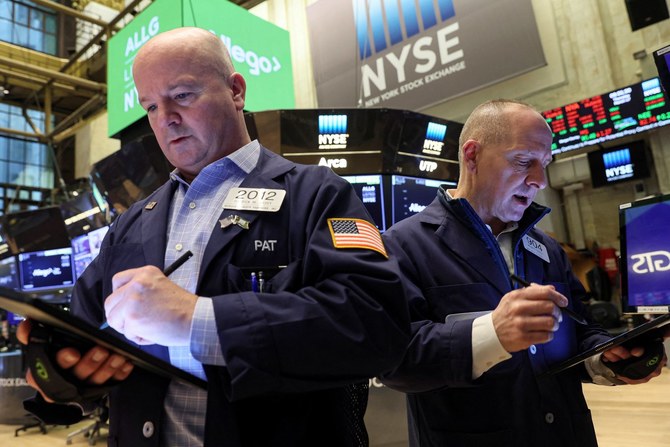JEDDAH: The value of projects under Saudi Arabia’s local content initiatives has reached approximately SR800 billion ($213 billion) by the third quarter of 2024, according to the Kingdom’s Minister of Industry and Mineral Resources, Bandar Alkhorayef.
Speaking at the ongoing second edition of the Local Content Forum in Riyadh, themed “Partnerships for Sustainable Growth,” Alkhorayef revealed that Saudi Arabia’s share of local content in government procurement has increased from 33 percent in 2020 to 47 percent by the third quarter of 2024.
The minister, who also serves as chairman of the Local Content and Government Procurement Authority, added that the authority has focused on encouraging target sectors to adopt and prioritize local content, improving governance in government procurement processes, and enhancing efficiency in this area.
Established in 2018, the LCGPA is responsible for developing and overseeing policies and regulations, fostering local opportunities, promoting transparency, and utilizing national purchasing power. In collaboration with both public and private sectors, its mission is to strengthen local content in the national economy and improve government procurement processes.
The second edition of the forum builds on the success of the first, offering new opportunities for knowledge exchange, experience sharing, and raising awareness about the enablers, mechanisms, and policies of local content.
During his speech, Alkhorayef emphasized the critical role of the LCGPA in advancing local content, which he described as a cornerstone of Saudi Vision 2030.
He highlighted local content as both a brilliant concept and a key innovation introduced by Vision 2030. Alkhorayef noted that local content has received consistent attention since its inception, with Crown Prince Mohammed bin Salman underscoring its national importance in his meetings.
The initiative has now become integral to national strategies and government actions, receiving recognition at local, regional, and international levels.
The minister further stated that the authority’s success is a result of a shared belief in the importance of local content. To maximize its impact, the authority has established and activated over 380 local content teams across various entities to ensure proper implementation and compliance with policies.
Alkhorayef also mentioned that the authority has supported national factories by adding 1,100 new products to the mandatory list, directing nearly SR87 billion in national spending toward local products from early 2022 through Q3 2024.
Additionally, the number of factories producing items on the mandatory list has increased by 1,437, reaching a total of approximately 6,100, an 8 percent growth rate—surpassing the 5 percent growth rate of all factories in the Kingdom. This growth has generated over 42,000 new job opportunities in the past three years, supporting the Kingdom’s efforts to empower national talent and create sustainable employment.
Alkhorayef also highlighted the authority’s success in signing 50 agreements to localize industries and transfer knowledge in key sectors such as transportation, logistics, medical supplies, pharmaceuticals, and water. These agreements are expected to contribute over SR47 billion to the country’s gross domestic product.
The minister emphasized that the benefits of local content extend beyond economic outcomes, contributing to stronger local capabilities, enhanced national security against global challenges, improved supply chain resilience, and increased foreign investment and technology transfer to the Saudi market.
He reiterated that achieving the shared national goal of advancing local content requires the collective effort of all sectors, affirming that the LCGPA is working at an accelerated pace with national entities to realize this goal and fulfill the Kingdom’s aspirations.
In his address during the forum, Faisal Al-Ibrahim, minister of planning and economy, emphasized the importance of knowledge transfer for local content.
He remarked: “Today we may produce a simple product, but tomorrow there will be multiple simple products, and over time, more complex products will be built on them. This accumulated knowledge sustains long-term economic diversification.”
Al-Ibrahim noted that Saudi Vision 2030’s core objective is to diversify economic growth by fostering an environment conducive to developing competitive products and services for global markets. He emphasized that local content is essential for the economy’s resilience and its ability to address future challenges.
In a panel discussion titled “Future Directions of Local Content in the Context of Saudi Vision 2030,” Al-Ibrahim explained that increasing exports will help diversify sources of growth, aiming for expansion beyond oil and public finances. This strategy will drive private sector growth, support small and medium-sized businesses, and create sustainable jobs.
Investment Minister Khalid Al-Falih also participated in the forum, asserting that the Saudi economy “should be, and is, part of an integrated global economy.”
He noted that globalization is here to stay, despite evolving supply chain dynamics and country-to-country connections. Al-Falih stressed that Saudi Arabia is targeting foreign investment to reach 5.7 percent of the total economy, aiming for a market worth over SR6 trillion by 2030, equating to nearly SR388 billion in investment.
Highlighting the local economy’s importance, Al-Falih pointed out that Saudi Aramco has become a global hub for knowledge and technology transfer. He also noted SABIC’s success in building a vast petrochemical industry in Saudi Arabia through partnerships with foreign investors and mentioned Ma’aden’s expanding global presence.
Ahmed Al-Zahrani, assistant minister of energy for development and excellence, discussed the role of the country’s energy sector localization committee, chaired by Energy Minister Prince Abdulaziz bin Salman and deputized by Alkhorayef.
Al-Zahrani emphasized the committee’s mission to promote localization and ensure stable supply chains within the energy sector. He highlighted a research and development program in collaboration with over 14 government and private entities, including Aramco, ACWA Power, SABIC, and several universities.
The goal, he said, is to ensure the sustainability of localization from research and development through innovation to the final product.





















